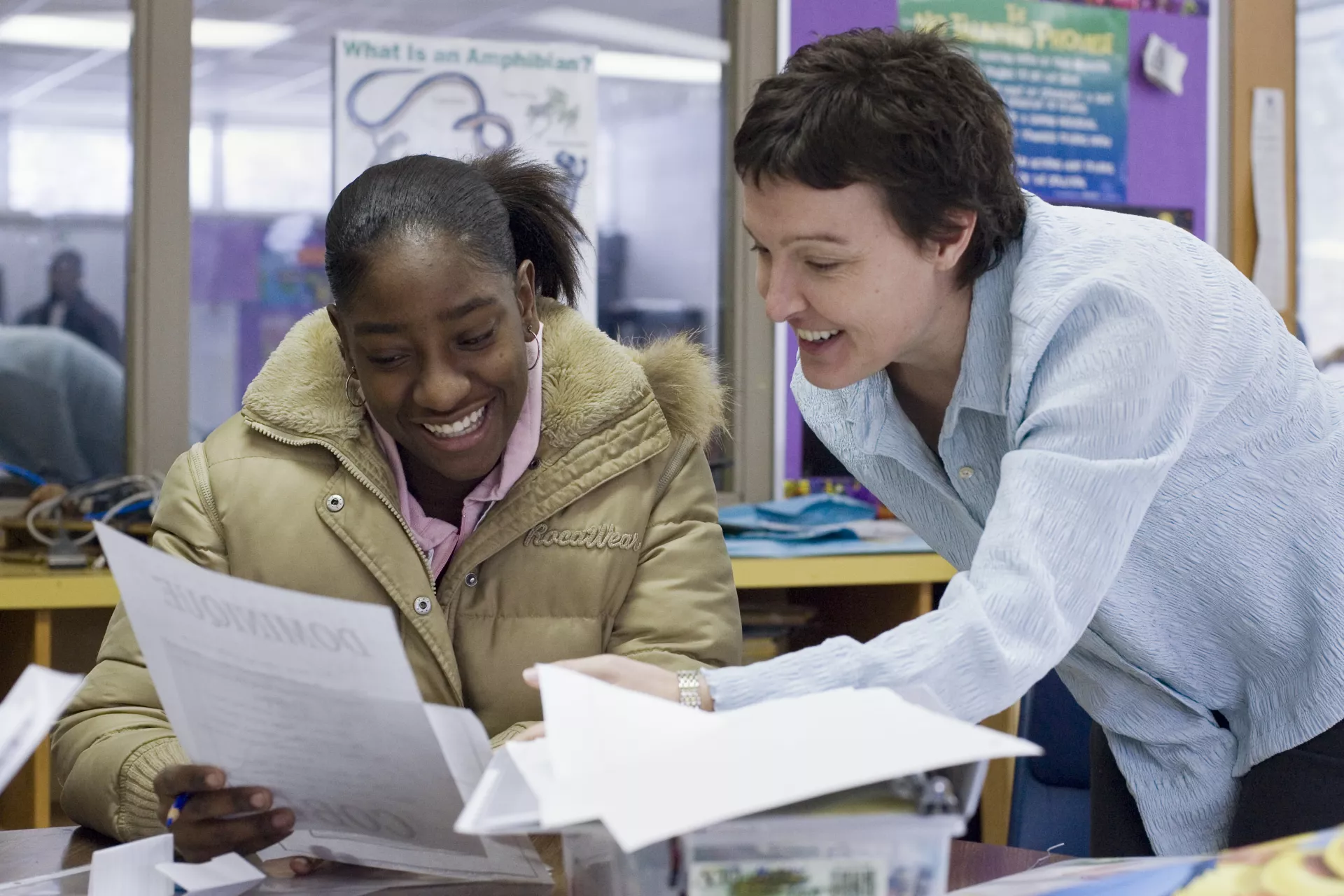When quality, classroom-focused learning objectives are created and implemented, students will benefit.
Have you ever planned a unit on salmon migration in Maine’s rivers for 3rd graders, or a unit on “survival” for middle school English Language Arts students who are reading young adult novels? Thematic units are a tried and true way for teachers to plan lessons focused on academic skills such as reading, math, science, or other subjects in the context of interesting themes to capture students’ attention and help them apply new skills and knowledge.
 Good unit plans start with a good idea, and should always include assessment. Student Learning Objectives (SLO) are a new tool developed to focus a teacher’s planning on student growth. SLOs are a requirement of most teacher evaluation plans in Maine. As with great unit plans, when quality, classroom-focused SLOs are created and implemented, students will benefit.
Good unit plans start with a good idea, and should always include assessment. Student Learning Objectives (SLO) are a new tool developed to focus a teacher’s planning on student growth. SLOs are a requirement of most teacher evaluation plans in Maine. As with great unit plans, when quality, classroom-focused SLOs are created and implemented, students will benefit.
SLOs include:
- Characteristics of learners
- Academic goals
- Instructional strategies
- Assessments
- Measurements of student growth over time
What Are SLOs?
A Student Learning Objective is the implementation of a long-term academic goal or set of goals created by a teacher or group of teachers using data about students and their learning over a defined period of time. SLOs are being used as a component of teacher evaluation in many states, including Maine. SLOs promote teacher collaboration, a focus on student learning, and encourage teacher reflection on the influence of classroom practice on student learning.
Creating a SLO is simple to start with, but gets more complex as you work into the details. SLOs can vary considerably, depending on district requirements, learning goals, the assessments used, and the length of time covered by the SLO.
SLOs are created on special forms and templates that have been developed to capture and formalize the process. SLOs can be aligned with school and school district goals, and may include a variety of assessments from teacher-created to performance measures to state-required tests. SLOs can be for one teacher or groups of teachers and may involve small numbers of students or fairly large cohorts. In some ways, SLOs resemble the Individual Education Plans (IEP) used by special education programs.
If they are set up right, and if administration is supportive, teachers can collaborate to take control of their practice through mastery of SLOs. If SLOs are seen as prescriptive and mandated by administration without regard to teacher input, SLOs will not be successful.
Teachers have been planning lessons and developing units for many years. SLOs are a way to formalize that planning and focus on student learning.
Mastering SLOs in your classroom will take time, study, and practice. Your school district is required to provide professional development for teacher evaluation, and SLO training should be part of that. MEA can provide assistance with local training and will offer ongoing training at MEA conferences and regional meetings.
7 Steps of Creating an SLO
Step 1: Who are your students? Every class is made up of individual learners with their own special characteristics. This information is essential to developing learning goals and instructional practices.
Step 2: Decide on the length of time covered by the SLO. Is it the length of the course, a semester, a full year? Often SLOs cover a full course of study, but that may vary, depending on the district or situation.
Step 3: Establish the appropriate standards and content covered by the SLO.
Step 4: Choose the assessments you will use to measure student learning.
Step 5: Establish growth targets for students in the cohort. The student growth should be based upon baseline data or a pretest and potential growth in learning. Use a growth model that includes all students’ growth, not attainment of a single growth target. When a target is used, it may not account for growth under the target or beyond the target.
Step 6: The teacher develops rationale for the growth targets using knowledge of the students, their circumstances or special needs, and the content.
Step 7: Develop instructional strategies that will best support students in their learning.



